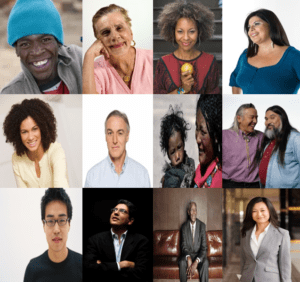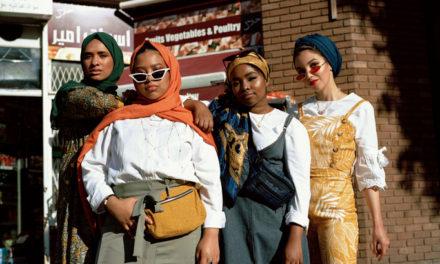 Adapted from: Race and Ethnicity: The Fiction and Reality Written By Mary-Frances Winters for Diversity Best Practices, 2012
Adapted from: Race and Ethnicity: The Fiction and Reality Written By Mary-Frances Winters for Diversity Best Practices, 2012
When California Newsreel’s PBS three-part series, The Power of Illusion, was released in 2003 pronouncing race is a social construct with virtually no biological basis, a media storm erupted in the popular press. While the scientific community had been debating this contention for some time this series explained the research in lay terms designed for the masses to understand.
While these revelations might have quelled some of the divisive discourse about race, it actually heightened the controversy especially among those tied, for a variety of socio-political reasons, to former theories of innate differences.
As recently as an August 1, 2011 Washington Post article, Role of race reemerges in DNA-testing debate, the divergent views among geneticists, socialists, bioethicists and anthropologists were revealed.
Some argued that designations such as black, white, Asian and Hispanic are outmoded classifications with little valid meaning for understanding genetic variations. The other side opined that meaningful DNA variations can track racial lines and to not explore them might jeopardize the effectiveness of the emerging concept of personalized medicine, aimed at developing treatment based on a person’s genetic makeup.
One of the contributors to the Washington Post piece, offered, “We recognize that race is a “fuzzy concept”. “Fuzzy” as it might be, it continues to be a divisive, complex topic fraught with painful memories and daily reminders for many. And for others, race is an issue that they want to bury once and for all either because it is just too uncomfortable to talk about or they really believe that we live in a “post racial society”.
An anthropological definition that was accepted until recent years, laid out three races including Caucasoid (of European descent), Mongoloid (of Asian Descent) and Negroid (of African descent). These distinctions were primarily made on the basis of physical characteristics such as skin color, hair texture and body type.
Today, according to the U.S. Census Bureau, the definition used to classify people is based on the notion that race is not “scientific or anthropological” and takes into account “social and cultural characteristics as well as ancestry”, using “appropriate scientific methodologies” that are not “primarily biological or genetic in reference.” The race categories include both racial and national-origin groups.”
Ethnicity has been considered separate and distinct from race, defined as a group of people who share common culture (language, heritage, religion, geographic region). For example, Mexican might be considered an ethnic group and members could identify with different races within the ethnic group.
Many social scientists have replaced the word race with ethnicity to refer to self-identifying groups based on shared beliefs, culture, ancestry and history. They have shifted away from the language of race to the term populations to talk about genetic differences.
The Subtleties: Color Matters
The amount of melanin in one’s skin matters. Colorism, a practice where those with lighter skin are treated more favorably than those who are darker manifests inter- as well as intra-culturally. Behavioral scientists have conducted numerous studies globally that show both whites and blacks are more favorably disposed toward people with lighter skin, rating them smarter, wealthier, even happier. One such study showed participants 60 photos, including some pictures of the same person that were altered to make their skin look darker. Both whites and blacks gave lower scores on intelligence to people with darker skin.
In Latin and South America, light skin is seen as more attractive. In Mexico and in Brazil, light skin represents power. Darker skinned people are more likely to be discriminated against across the globe
The Emergence of Multiracialism
Multiracialism: A concept or ideology that promotes a society composed of various races, while accepting and respecting different cultural backgrounds. It is a society that consists of a diverse mix of people, whether it be relative to their ethnicity, language, culture, religion, and traditions.
Compounding the ability to clearly define racial categories is the rise of multiracialsim. For centuries, multiracial people lived on the margins of their identities, not feeling totally connected to any of them. Interculturalist Janet Bennett describes the phenomena of cultural marginality as “internal culture shock”—the conflict between two cultural voices competing for attention among oneself.”
But with a significant rise in multiple-race births in both Europe and the United States, many individuals who claim ancestry from more than one race are no longer willing to be forced into checking only one box. And their growing numbers are giving them more of a voice as they come out of the shadows societies have put them in. (Read more: Trend 6 – Who Am I? The Rise of Multiple Identities)
Implications and Recommendations for D&I Practitioners:
- Embrace the concept that race is a social construct with little genetic meaning and consider reframing race discussions using the lens of ethnicity and color. Colorism is still a significant global issue that is very seldom explored in any depth.
- Give employees “permission” to talk about race by teaching them how to talk about it in constructive ways. We have been lamenting for years that we, as a society, try to avoid discussions of race. We need courageous and culturally competent practitioners who can effectively bring the real issues to the fore, creating safe spaces for the tough discussions.
- Develop robust content to have meaningful and instructive dialogue around the global issues, including a historical perspective that frames the topic, not strictly from a U.S. Civil Rights Movement lens.
- Support employees of color with their own issues about addressing race. There are generational considerations. Baby boomers have had very different life experiences than Millennials. Tensions arise when Millennials of color declare that race is not an issue for them and boomers decry that race is an issue for everyone of color.
- Address the “they need to get over it” sentiment that is often today’s reaction to race. Just like diversity, as the umbrella subject, is ongoing and ever evolving, race as an aspect of the diversity milieu, is inextricably entwined with many socio-economic and political problems of the day. We will not alleviate these problems without facing race as the crux.
::Read the other Key Diversity & Inclusion Trends for 2013::


















